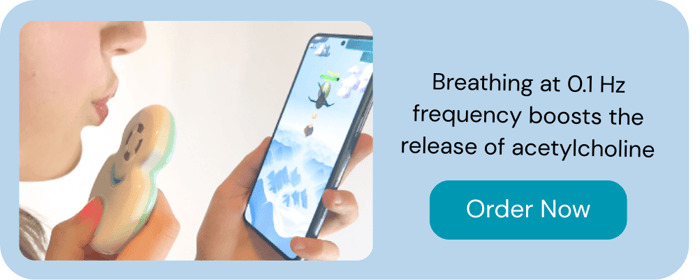Table of Contents
- Myth 1: All inflammation is bad
- Myth 2: Inflammation only affects the body, not the brain
- Myth 3: If you eat anti-inflammatory foods, that’s all you need to control inflammation
- Myth 4: Only older people need to worry about chronic inflammation
- Myth 5: Inflammation is only caused by injury or infection
- Myth 6: Anti-inflammatory medication is always the best solution
- Myth 7: If you’re not in pain, you’re not inflamed
- Final Thoughts: the Enemy is Misinformation
- FAQs
Inflammation is one of those buzzwords that gets thrown around in wellness blogs, medical forums, and supplement ads—but what is it really? More importantly, what isn’t it?
There’s no doubt that inflammation plays a central role in how the body responds to injury, infection, and even stress. But in the age of misinformation, a lot of myths have cropped up around it—especially when it comes to the brain. In this post, we’re unpacking 7 of the most common myths about inflammation to help you separate fact from fiction.
Myth 1: All inflammation is bad
Reality: Not all inflammation is harmful. In fact, it’s essential for healing.
Acute inflammation is your body’s frontline defense—it kicks in when you cut your finger, sprain an ankle, or catch a cold. White blood cells rush to the scene, cleaning up damaged tissue and fighting off invaders. Once the job is done, it usually subsides on its own.
The real trouble begins when it becomes chronic—lingering quietly for months or years. This low-grade inflammation (LGI) can contribute to diseases like arthritis, heart disease, type 2 diabetes, and even depression. But the key takeaway? Inflammation itself isn’t the villain—it’s how long it sticks around and whether your body can shut it off properly.
Myth 2: Inflammation only affects the body, not the brain
Reality: Brain inflammation is real—and it matters more than most people realize.
The brain has its own immune system, with specialized cells called microglia that act like first responders. When there’s a trigger—whether it's an infection, injury, or chronic stress—these cells become activated and release inflammatory molecules. This process is known as neuroinflammation.
It can drive the onset and severity of depressive symptoms. This process disrupts key brain networks that regulate emotions and motivation, contributing to low mood, reduced drive, and cognitive difficulties.
Research has linked chronic neuroinflammation to mental health conditions like depression and anxiety, as well as neurodegenerative diseases like Alzheimer’s and Parkinson’s. It's subtle, and it doesn't always show obvious symptoms, which is why it often flies under the radar.
Myth 3: If you eat anti-inflammatory foods, that’s all you need to control inflammation
Reality: Diet is important—but it's just one piece of the puzzle.
Turmeric, green tea, berries, olive oil—yes, these are anti-inflammatory superstars. But even the healthiest diet can’t work its magic if your stress levels are sky-high, or if you’re sleep-deprived all the time.
Inflammation is influenced by multiple factors:
- Chronic stress (raises cortisol)
- Lack of exercise or overtraining
- Poor sleep quality
- Gut health imbalances
- Environmental toxins
- Hormonal shifts
Superfoods are powerful, but they can’t outwork constant stress and the accumulation of hidden stressors. To truly manage chronic inflammation, you need a strategic plan—one that weaves together smart nutrition, stress regulation, and daily lifestyle practices.
Myth 4: Only older people need to worry about chronic inflammation
Reality: Chronic inflammation can affect people at any age—even teens and young adults.
The chronic type is a significant health concern that affects individuals across all age groups, including young adults. Alarmingly, recent data indicates that over half (53.8%) of adults aged 18-34 in the United States reported having at least one chronic condition in 2019, many of which involve underlying inflammation. Furthermore, a study published in Neurology found that even moderate to high levels in young adulthood (ages 20s and 30s) may be linked to poorer cognitive performance, including slower processing speed and executive function, in middle age.
Modern lifestyles make it incredibly easy to trigger LGI early in life. Think:
- Processed foods and sugar overload
- Lack of movement (thanks, sedentary jobs)
- Overexposure to blue light and screens
- Constant digital stimulation and stress
Add in poor sleep hygiene and you’ve got a perfect storm. Early signs might show up as mood swings, fatigue, or digestive issues—things we often normalize, but shouldn't.
Myth 5: Inflammation is only caused by injury or infection
Reality: Chronic inflammation can be triggered by everyday, invisible stressors.
Sure, it starts as a response to injury or infection—butt here are invisible stressors like:
- Emotional stress
- Unhealthy diet
- Poor gut health (leaky gut or dysbiosis)
- Lack of sleep
- Blood sugar imbalance
They all can also keep your immune system in a state of "low simmer," leading to persistent one. This chronic type can quietly damage tissues over time—without you even realizing it’s happening.
Myth 6: Anti-inflammatory medication is always the best solution
Reality: Medications can help manage symptoms, but they don’t always address the root cause.
Over-the-counter NSAIDs (like ibuprofen) are commonly used to reduce inflammation and pain—but they don’t come without risks, especially when used long-term. Plus, they target symptoms rather than the deeper issue.
For the chronic type it often requires a holistic approach that includes:
- Identifying hidden triggers (like stress or gut issues)
- Optimizing nutrition
- Supporting the body’s natural detox systems
- Prioritizing rest and nervous system regulation (with breathwork)
Medications can be helpful tools—but they’re rarely the whole answer.
Myth 7: If you’re not in pain, you’re not inflamed
Reality: It doesn’t always cause pain—especially when it’s in the brain.
This is one of the most dangerous myths, because it gives a false sense of security. Many people assume inflammation = pain, and if they’re not hurting, everything must be fine.
In the brain or gut it can manifest as:
- Low energy
- Anxiety
- Mood swings
- Sleep disruption
- Hormonal imbalances
These are warning signs that something may be off—even if there’s no pain involved.
Final Thoughts: the Enemy is Misinformation
Inflammation is a complex and dynamic process—it’s neither good nor bad, just deeply misunderstood. When balanced, it’s your body’s way of healing and protecting itself. When unregulated, it becomes a silent force behind many chronic conditions, both physical and mental.
So instead of fearing it, the goal should be understanding it—learning how to support your body’s natural balance through awareness, lifestyle, nutrition, sleep, stress management, and of course, breathwork!
Knowledge is power, and now that you’re armed with the truth, you’re one step closer to reclaiming your well-being from the inside out.
Ready to experience the benefits of breathwork?
Disclaimer: This blog post is intended for informational purposes only and should not be considered medical advice. Always consult with a qualified healthcare professional for any health concerns or before making any decisions related to your health or treatment.
References
- Walker, K. A., Sharrett, A. R., Wu, A., Schneider, A. L. C., Albert, M., Lutsey, P. L., Bandeen-Roche, K., Gross, A. L., Windham, B. G., & Gottesman, R. F. (2019).
Association of midlife to late-life blood pressure patterns with incident dementia. Neurology, 92(21), e2692–e2700. - Jiang, W., Huang, Y., He, F., & Song, J. (2019).
Cognitive impairment and microglial activation induced by lipopolysaccharide in mice: Possible involvement of neuroinflammation and oxidative stress. Scientific Reports, 9, 1047. - DiSabato, D. J., Quan, N., & Godbout, J. P. (2021).
Neuroinflammation: The devil is in the details. Frontiers in Aging Neuroscience, 13, 703520. - Miller, A. H., & Raison, C. L. (2016).
The role of inflammation in depression: From evolutionary imperative to modern treatment target. Nature Reviews Immunology, 16(1), 22–34.
FAQs
Is all inflammation bad for the body?
No. Acute inflammation is a natural, protective response that helps the body heal from injury or infection. Chronic low-grade inflammation, however, can be harmful and is linked to fatigue, hormonal imbalance, pain, and increased risk of chronic disease.
Can stress cause inflammation?
Yes. Chronic stress activates the sympathetic nervous system, increasing cortisol and inflammatory cytokines. Over time, this heightened stress response can contribute to persistent inflammation and exacerbate symptoms like pain, fatigue, or mood swings.
Does diet alone control inflammation?
While nutrition plays a key role, it’s not the only factor. Sleep, exercise, stress management, and nervous system balance are equally important. Combining a healthy diet with practices like breathwork, mindfulness, and parasympathetic activation is most effective in reducing inflammation.
Are inflammation symptoms always noticeable?
Not always. Chronic inflammation can be silent, showing subtle signs like low energy, brain fog, digestive issues, or mood fluctuations. Tracking your body’s physiological responses, such as heart rate variability, can help reveal hidden inflammation.
Can women’s hormones influence inflammation?
Absolutely. Hormonal fluctuations throughout the menstrual cycle, perimenopause, or menopause affect immune system activity. Low estrogen or progesterone levels can increase inflammatory responses, making cycle-related symptoms more pronounced.





